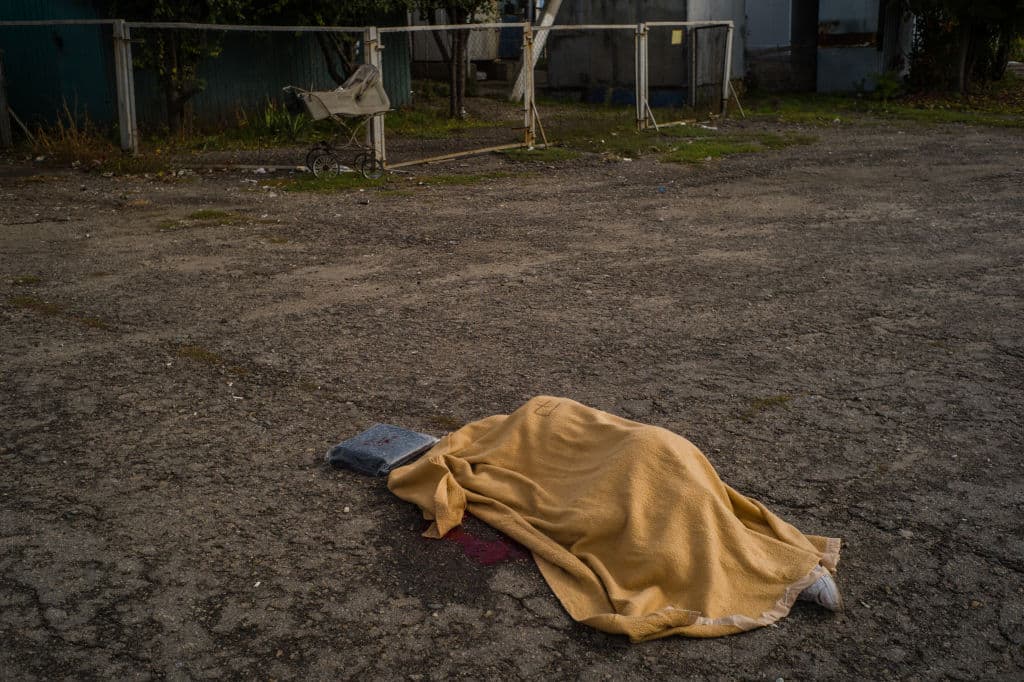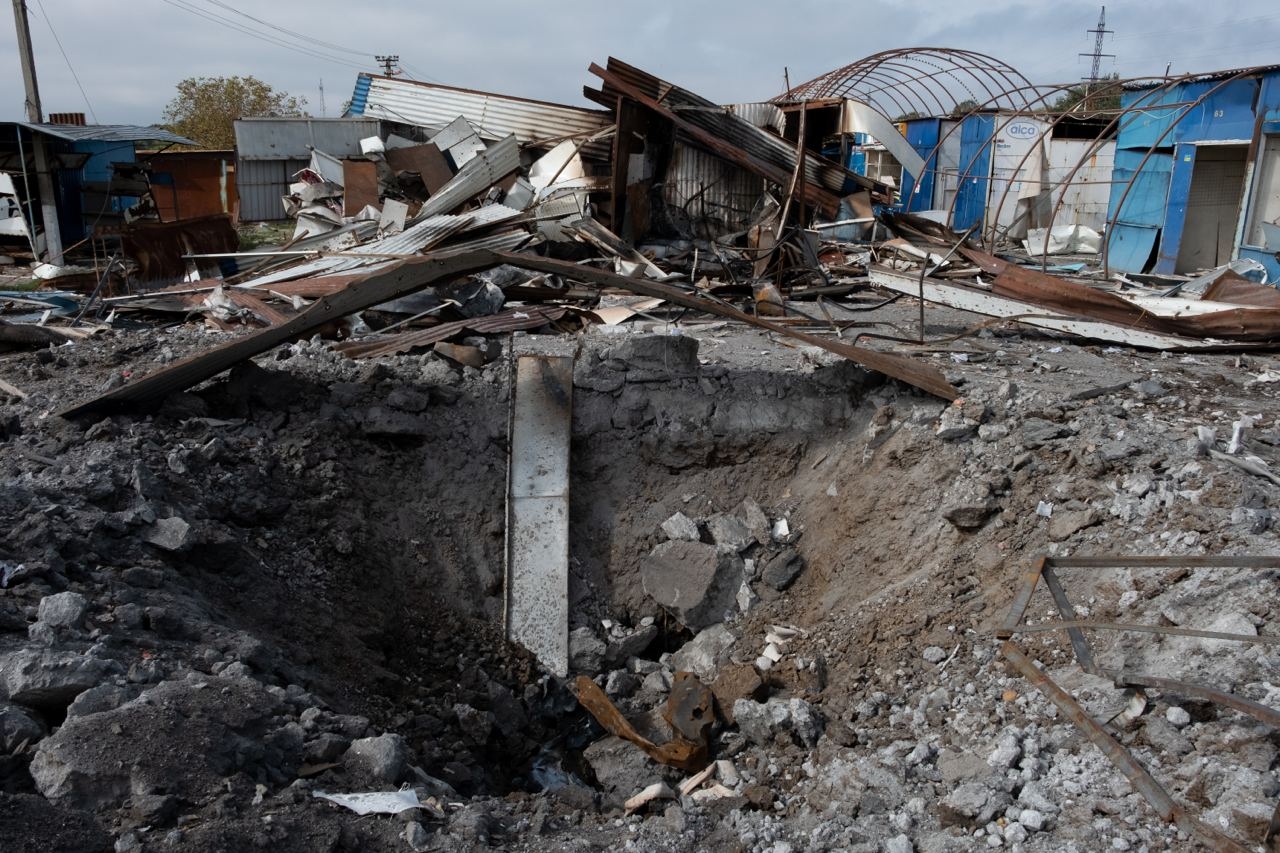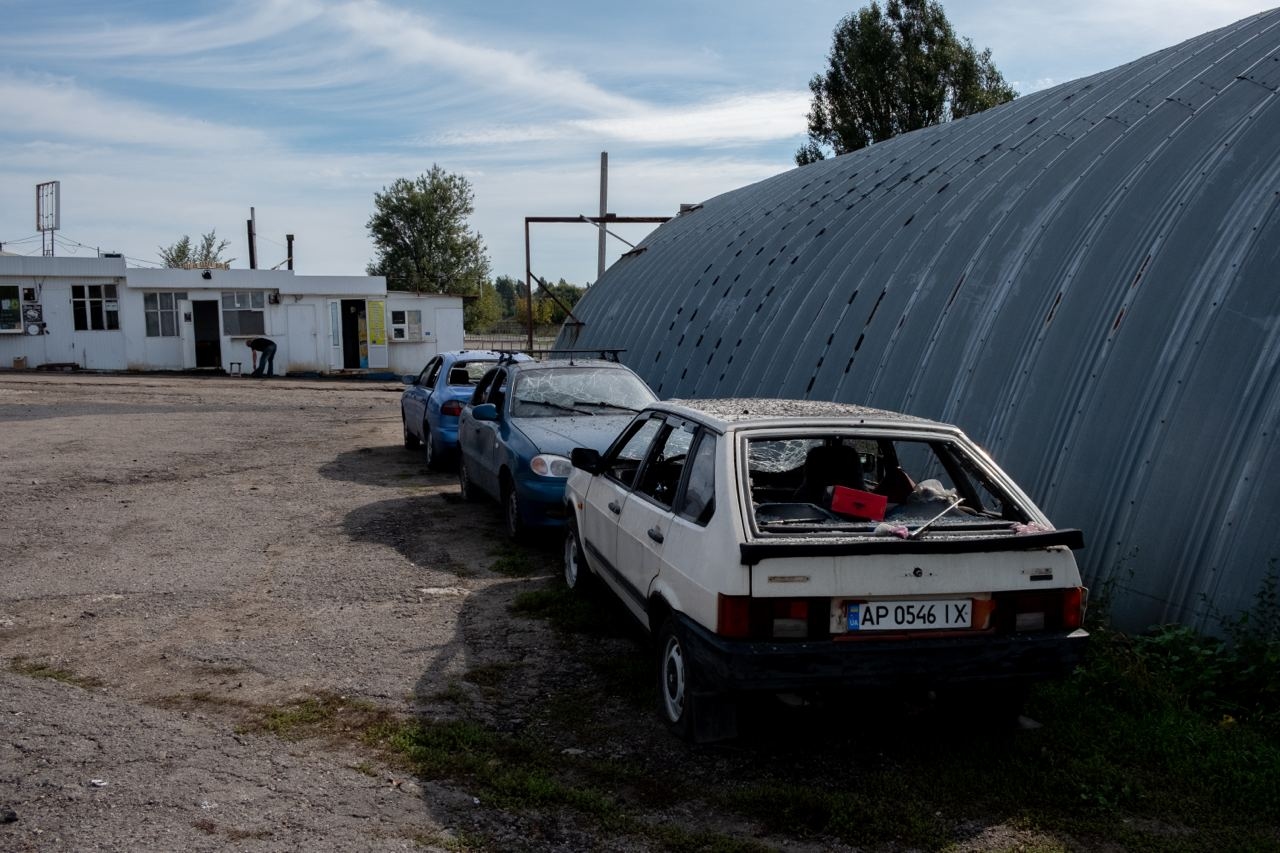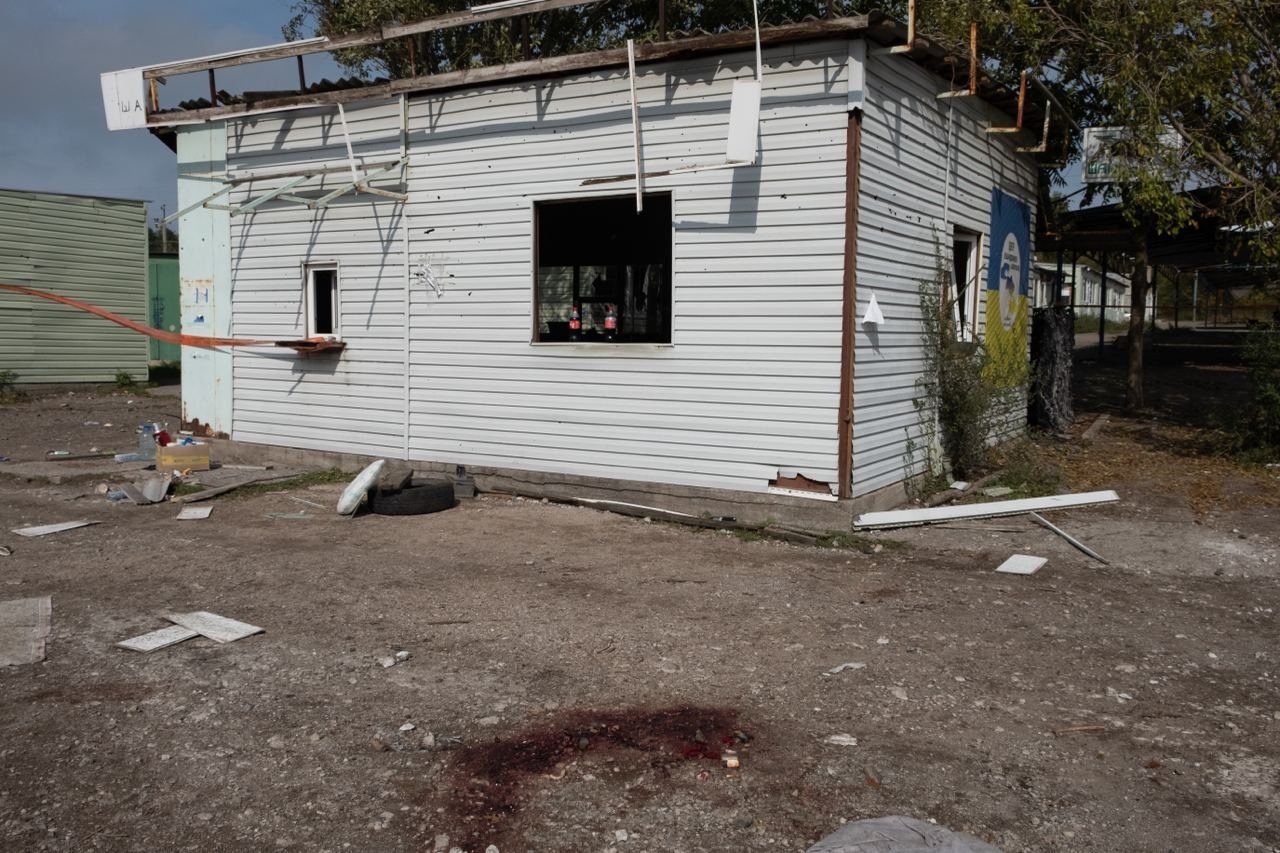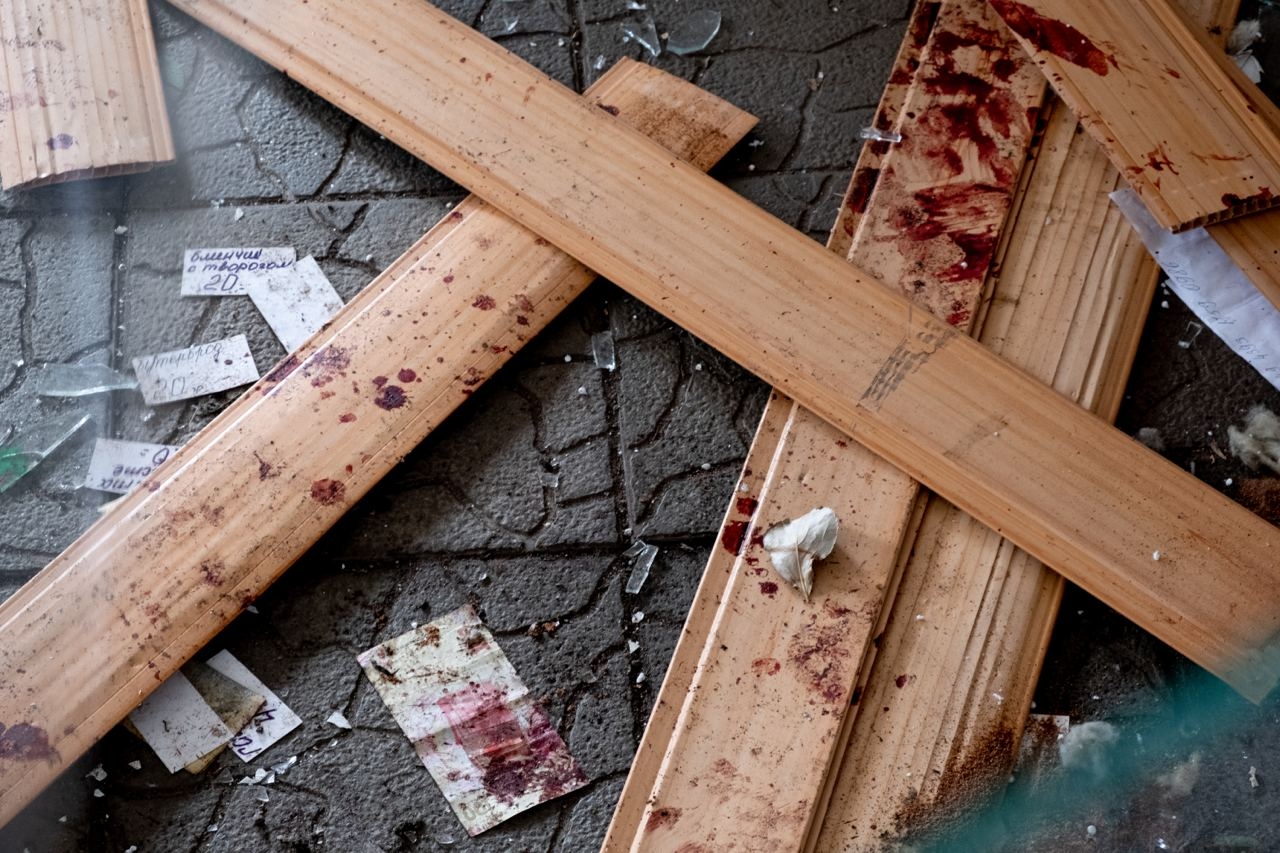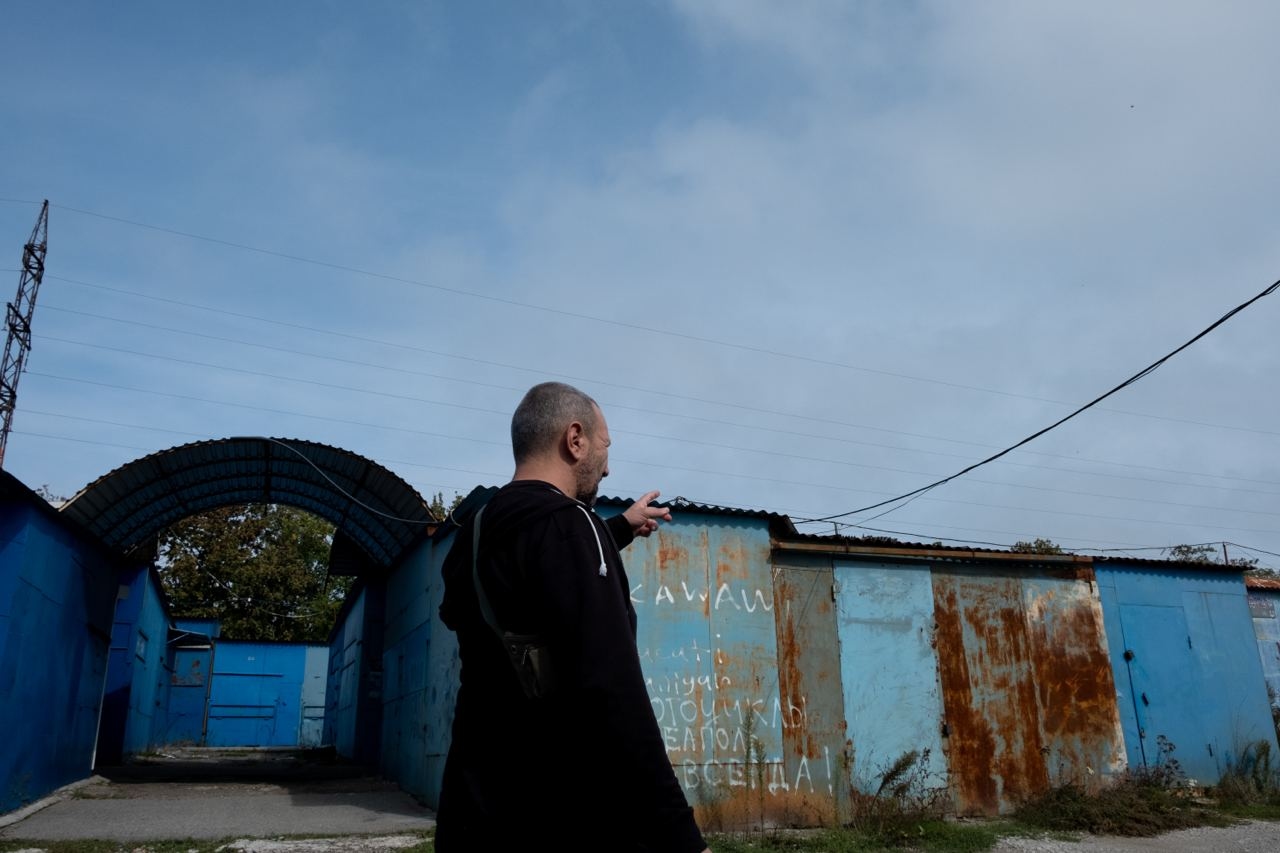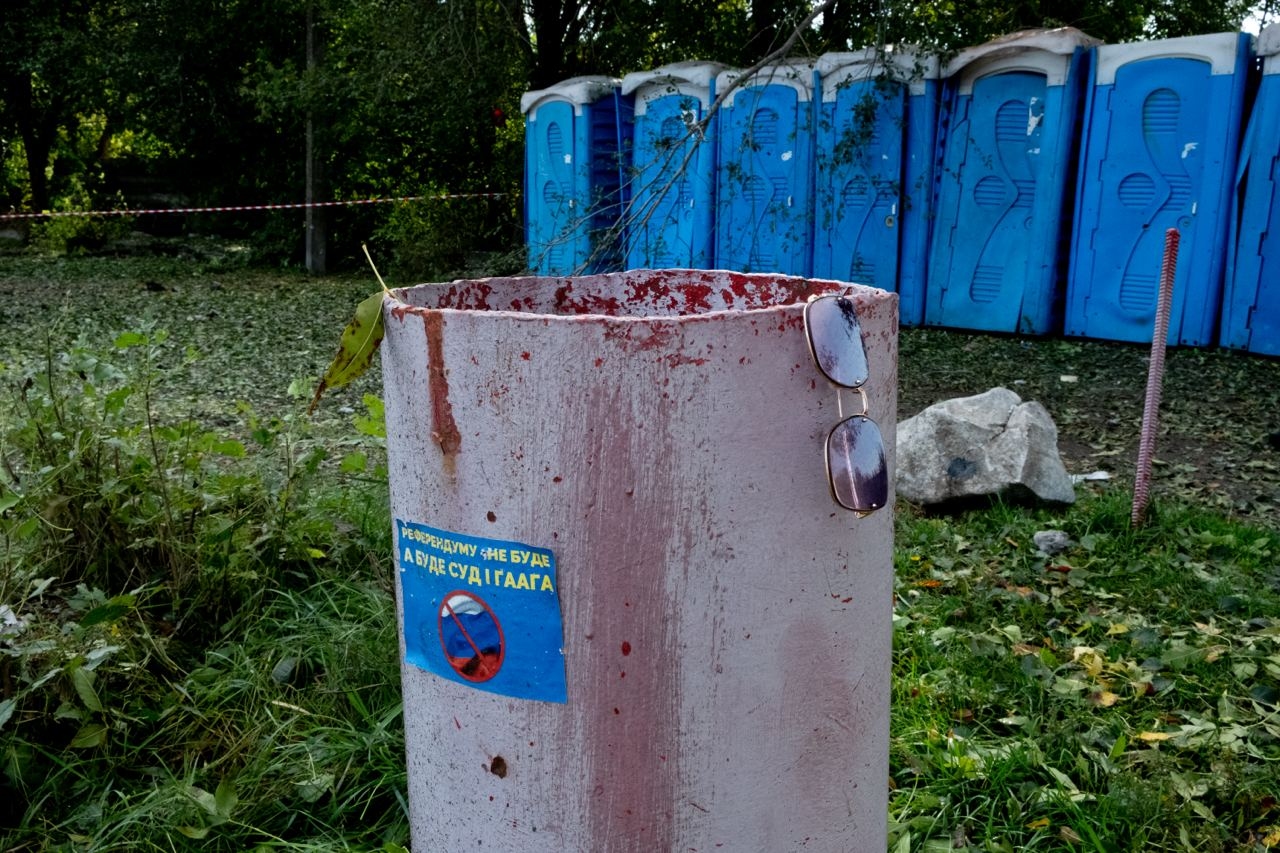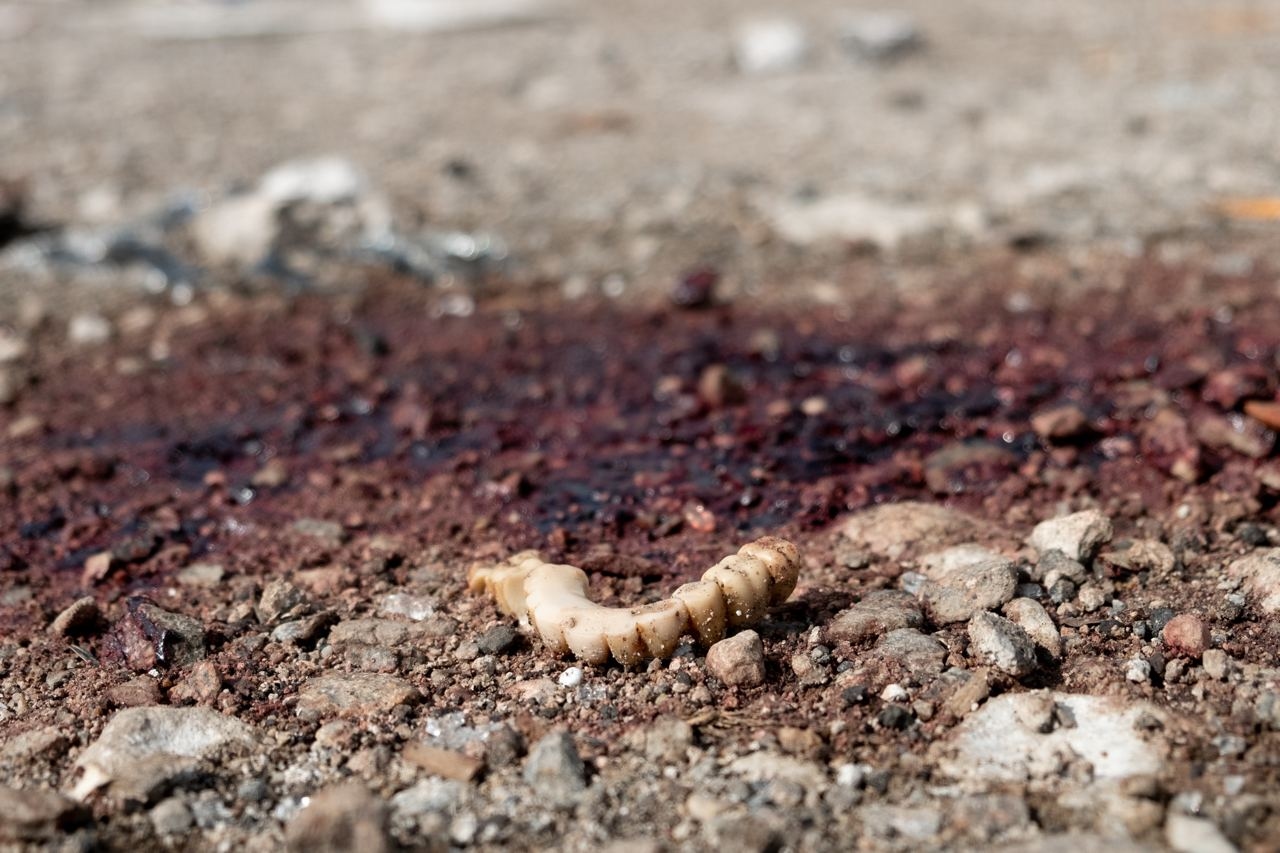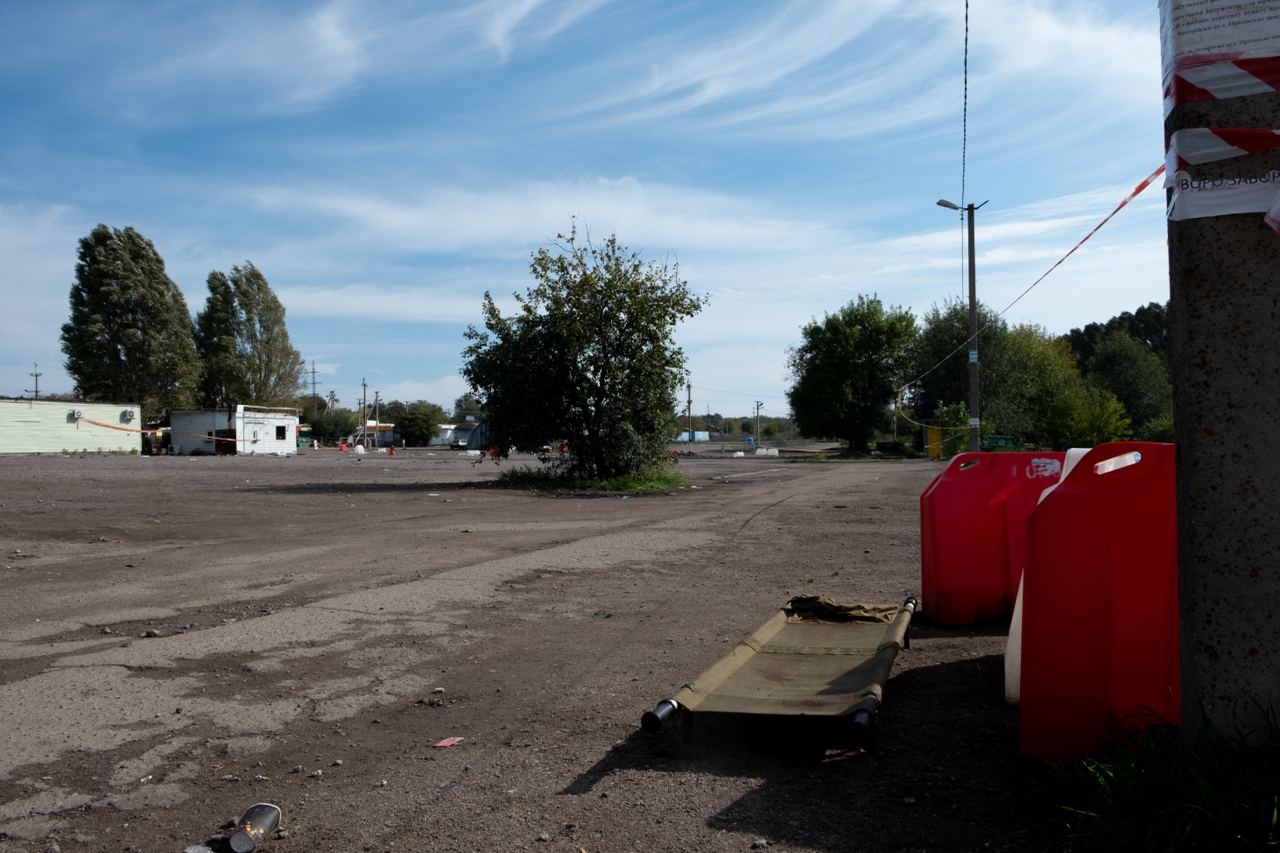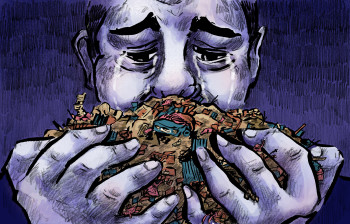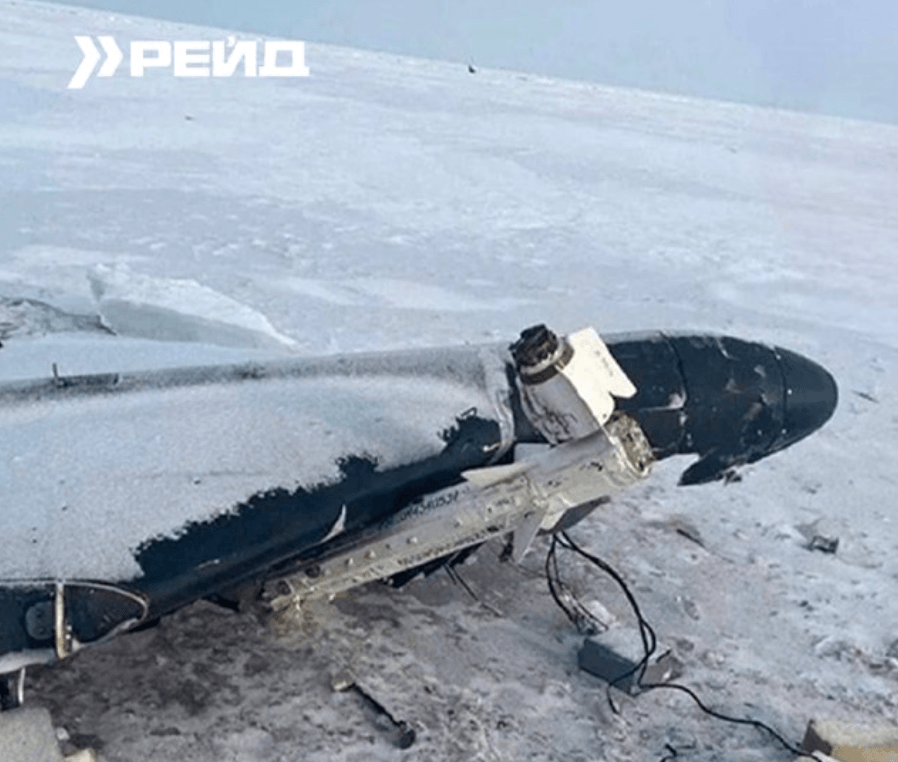ZAPORIZHZHIA — Guarding a quiet turnoff from the road heading south out of Zaporizhzhia city to the territories occupied by Russia, two Ukrainian police officers were approached by a middle-aged woman in a state of near despair.
“My friend was killed here yesterday,” she said to the officer as she got out of her car. “I’m looking for her things, but nobody will help me.”
Oleksandra, who declined to give her last name out of fear, learned of the death of her friend through a local Telegram channel. The image of the woman, lying underneath a white sheet in a pool of blood while her luggage stood patiently beside her, was one of many soon beamed around the world, horrific evidence of Russia’s latest blatant attack against civilians.
Early in the morning on Sept. 30, 16 missiles were fired at Zaporizhzhia, regional capital of the southern Ukrainian Zaporizhzhia Oblast with a prewar population of 710,000. The oblast, which is partially occupied by Russian forces, was illegally annexed along with three other Ukrainian oblasts by Russia later on Sept. 30.
Three of the missiles launched on Zaporizhzhia, S-300 anti-air missiles repurposed for a ground attack function, were used to target a column of civilian cars waiting to cross the contact line into the occupied territory. The column had gathered at a car parts market just outside the city limits, a large facility with five rows of steel-doored shops and dozens of kiosks and offices.
“My friend had been to Kyiv and stayed with me here in Zaporizhzhia, but she needed to go home to Mariupol,” Oleksandra said. “The day before yesterday, she got a message from the carrier to be there in line at 7 a.m., just in time for the missiles.
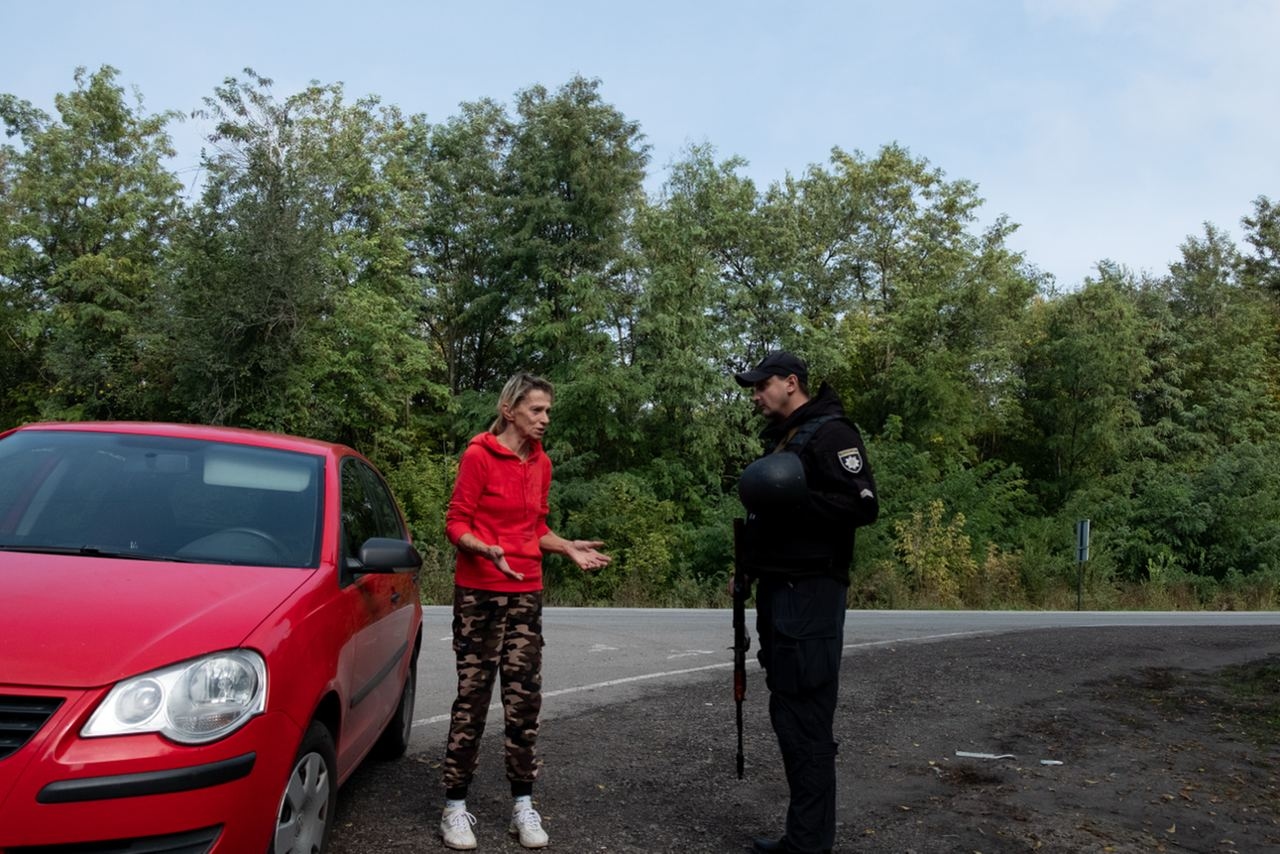
As of the latest figures, 31 people were killed and 92 wounded by the strike.
“The enemy rages and seeks revenge for our steadfastness and their failures,” wrote President Volodymyr Zelensky in response to the attack. “They cynically destroy peaceful Ukrainians, having lost everything human a long time ago.”
Indescribable terror
One day after the attack, as a day of mourning was announced in Zaporizhzhia Oblast, the crime scene was eerily quiet. Largely cleared by emergency services and investigation teams, fresh traces of death still remain. Two unmistakable craters of the S-300, four meters wide and just as deep, are clearly visible, one of which landed squarely in between the columns of cars. A third remained uncleared, at the eastern end of the shop rows.
Most of the cars and personal items had been removed from the scene. Stray shoes, children’s toys, a set of dentures torn from the mouth of its owner, and pools of barely dried blood give some indication of the lives that were ended on this spot.
Oleksandr Kovalenko, 46, was found packing away equipment from his ruined kiosk, located around 80 meters from the second crater. Arriving to work just before the first missile hit, he made a lucky escape, ducking between the rows of shops. “I came out of the shop to see a huge piece of shrapnel had gone through the windscreen,” Kovalenko told the Kyiv Independent. “I just ran, I had no idea what was going on.”
His colleague and close friend who worked in the kiosk just 15 meters from the epicenter was not so lucky. “She was heavily wounded by shrapnel,” Kovalenko said, “She didn’t make it far before she bled out.” Leading out the door from the woman’s ransacked shop, a thick trail of blood corroborates Kovalenko’s account.
According to Kovalenko, the three missiles struck the auto market in the space of 15 minutes. Surveying the third crater, Kovalenko realized how lucky he was to be alive. “I was so close to it,” he said. “The shop rows saved my life.”
Despite the risk of the area being hit again, Kovalenko eventually emerged to search for his friend, only to find her already dead, while emergency services had begun to arrive.
Photographs from local media on the scene gave an early glimpse of the massacre that occurred.
“I can’t describe what I saw,” he said. “It’s still so fresh, being there, losing a friend; I still struggle to believe it really happened.”
Crossing the line
Coming on the same day as Russia’s illegal annexation of Zaporizhzhia Oblast along with Kherson, Donetsk, and Luhansk oblasts, the attack placed new scrutiny on the way movement across the contact line was being conducted.
Kostiantyn, 42, who also declined to give his name due to security reasons, wasn’t present during the attack, driving out the next day to inspect the damage.
“I was meant to be here at seven yesterday morning, I would normally park my car just over there,” Kostiantyn said, pointing to the poplar tree next to the shop where Kovalenko’s friend was killed. “If I hadn’t slept in, I wouldn’t be here today.”
Kostiantyn worked as a lawyer at the facility, providing legal assistance to those exiting Ukrainian-controlled territory. “In the early months, there was a lot of chaos here,” he said. “They weren’t letting people out, telling them that they needed to go to the enlistment office first. People didn’t know what their rights were.”
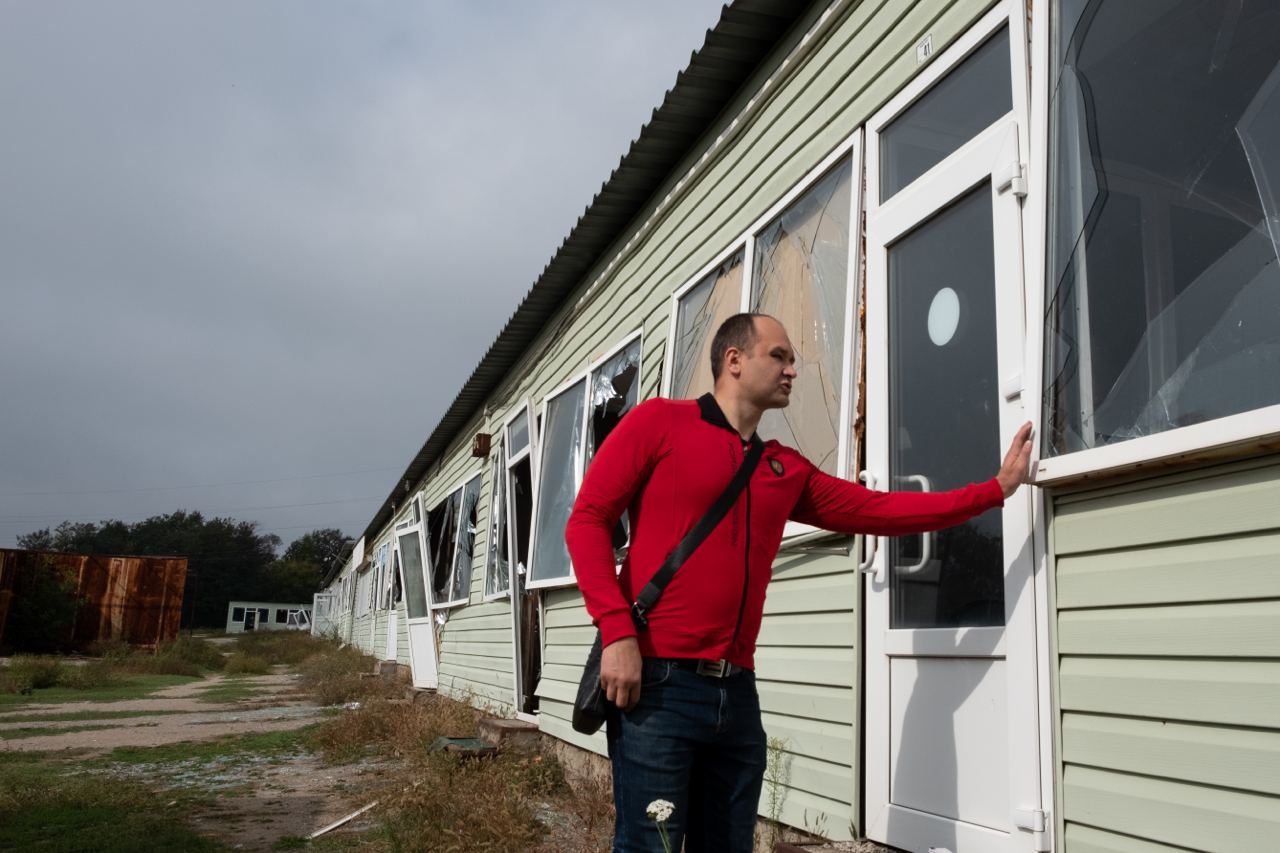
When the front line in Zaporizhzhia Oblast stabilized in the early months of the war, the road became the main crossing point for anyone traveling between Ukrainian-controlled and occupied territories. Eventually, as the reality of a long war set in, practical needs meant that more and more people started returning to occupied areas.
“After a while, for those that came to Zaporizhzhia or other cities in Ukraine, their savings began to run out,” Kostiantyn said. “People needed to return to work, to tend to their homes and gardens, to look after older relatives.” The dire economic situation in the occupied territories also forced Ukrainians to embark on their own individual humanitarian missions to the area.
“There is a desperate shortage of food, medicine, and basic supplies there,” said Kostiantyn. “The Russians refuse to let organized humanitarian aid convoys in, it’s a bad look, but they are allowing people to bring what they need individually.”
Russian state media was quick to blame Ukraine for the attack, placing emphasis on the fact that the victims were leaving Ukrainian-controlled territory.
“They can say and write what they want,” Kostiantyn said. “In reality, there is no logic to this, nobody needs it, it’s nothing but pure terrorism.”
Deep wounds
A tidy, modern building of steel and glass, Zaporizhzhia’s Regional Clinical Hospital is located just a kilometer away from where the convoy was attacked, and was the first point of call for the wounded.
“The first ones that came in were brought by others there at the scene,” said Oksana Morozova, a 43-year-old nurse at the hospital. “Even those who were wounded themselves were bringing people in if their vehicles were still working.”
Speaking to Suspilne media outlet on the day of the attack, the hospital’s head doctor Ihor Shyshka said that only a small portion of the victims escaped with minor wounds. “The rest of those we are treating here will need serious emergency surgery, often in more than one place.”
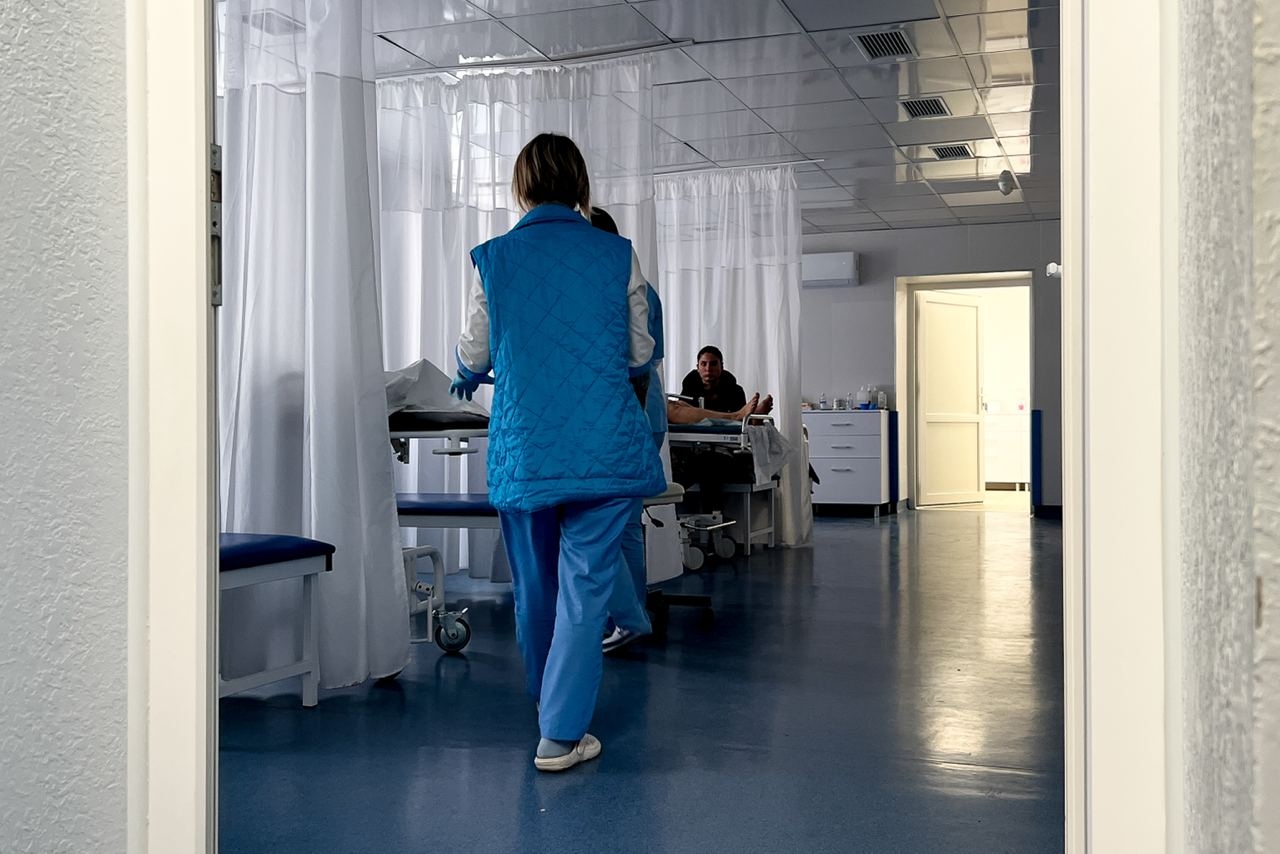
Inside the emergency reception room, distressed family members crowd the desk, waiting to learn of the status of their loved ones. “It was truly terrifying as they were brought in,” Morozova said. “Almost everyone had huge gashes from shrapnel through the legs and abdomen.”
In similar fashion to other Russian attacks on civilian areas far from the front line, entire families were torn apart instantaneously by the missile strike in Zaporizhzhia. Two children have been confirmed killed, while a three-year-old child lost both his parents.
“The little boy has been transferred to the children’s hospital,” Morozova said. “Three years old… he doesn’t understand anything about what is happening, and now his parents are gone.”
Note from the author:
Hi, I'm Francis Farrell, the author of this piece. Residents of Zaporizhzhia woke up on Sept. 30 to a terrorist attack that claimed the lives of 31 civilians, and in the afternoon their home was illegally annexed on paper by Russia. Russia's war against Ukraine is accelerating and escalating. As it unfolds, please consider continuing to support the global voice of Ukraine.

